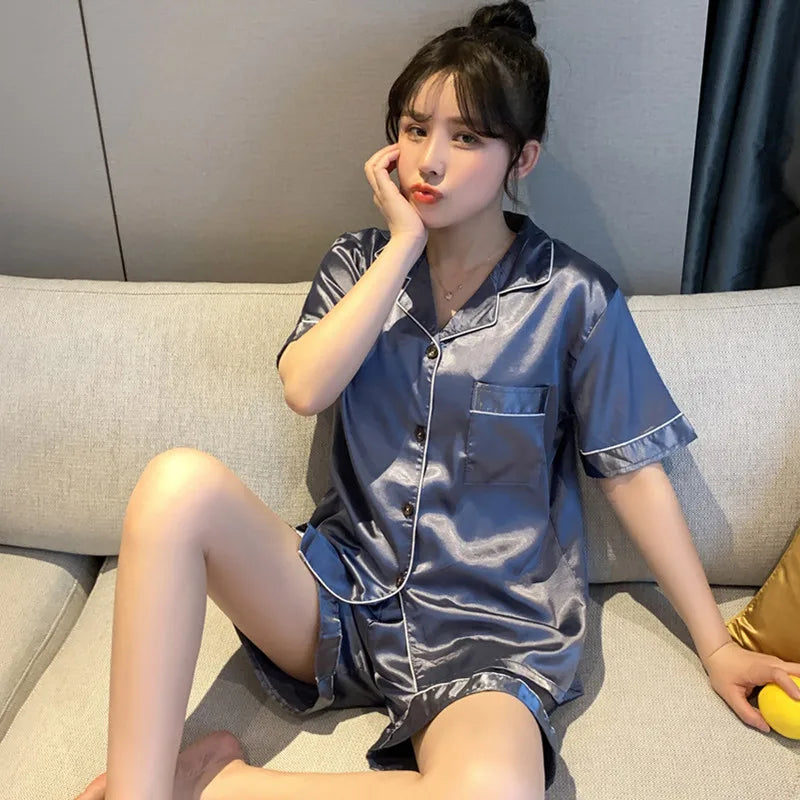How to Make Bamboo Pajamas: A Comprehensive Guide to Comfort and Sustainability
Table of Contents
- Introduction
- Understanding Bamboo Fabric
- The Benefits of Bamboo Pajamas
- Sourcing Bamboo Fabric
- The Process of Making Bamboo Pajamas
- Caring for Bamboo Pajamas
- Conclusion and FAQs
Introduction
Have you ever experienced the exquisite softness of bamboo fabric against your skin? If not, you are in for a delightful revelation. Bamboo fabric has become a favorite among those who value both comfort and sustainability, and for good reason. It combines luxurious softness with a host of benefits that make it a smart choice for sleepwear. As we explore how to make bamboo pajamas, we will not only delve into the crafting process but also highlight the broader implications of choosing bamboo as a material for your nightwear.
Bamboo has rapidly gained popularity in the clothing industry, particularly in the realm of sleepwear. This shift is driven by a growing awareness of sustainable fashion and the urgency to reduce our ecological footprint. Bamboo, as a plant, is a renewable resource that requires significantly less water and no harmful pesticides to grow, making it an environmentally friendly choice. Furthermore, its unique properties—such as breathability, moisture-wicking capabilities, and hypoallergenic nature—make it ideal for pajamas.
In this blog post, we will guide you through the process of making bamboo pajamas, from sourcing the right fabric to the step-by-step crafting process, while also discussing the advantages of bamboo fabric in the context of nightwear. By the end of this guide, you will understand not only how to create your own bamboo pajamas but also why this sustainable fabric choice is beneficial for both you and the planet.
Together, we will explore the following sections:
- Understanding Bamboo Fabric: What makes it special?
- The Benefits of Bamboo Pajamas: Why choose bamboo for sleepwear?
- Sourcing Bamboo Fabric: How to find quality materials.
- The Process of Making Bamboo Pajamas: Step-by-step instructions.
- Caring for Bamboo Pajamas: Ensuring longevity and comfort.
- Conclusion and FAQs: Recap of key points and common questions.
Let’s embark on this journey to discover how to make bamboo pajamas and embrace the comfort and elegance they offer.
Understanding Bamboo Fabric
Bamboo fabric is derived from the pulp of bamboo grass, a fast-growing and renewable resource. Unlike conventional fabrics, bamboo has unique properties that make it a standout choice for sleepwear. Here are some key characteristics of bamboo fabric:
1. Softness and Comfort
Bamboo fabric is renowned for its exceptional softness, often compared to silk or cashmere. This luxurious feel makes it perfect for pajamas, ensuring a comfortable night’s sleep. The fibers are smooth and gentle on the skin, which is especially important for those with sensitive skin.
2. Breathability and Moisture-Wicking
One of the standout features of bamboo fabric is its breathability. Bamboo fibers have micro-gaps that allow air to circulate, keeping you cool in warm weather and warm in cooler temperatures. Additionally, bamboo is highly absorbent and wicks moisture away from the skin, making it ideal for pajamas.
3. Hypoallergenic and Antibacterial Properties
Bamboo fabric possesses natural hypoallergenic and antibacterial properties, which help prevent odors and reduce the growth of bacteria. This is particularly beneficial for individuals with allergies or skin sensitivities, making bamboo pajamas a great choice for everyone.
4. Sustainable and Eco-Friendly
The environmental benefits of bamboo cannot be overstated. Bamboo grows rapidly, requiring minimal resources compared to traditional cotton. It absorbs more carbon dioxide and releases more oxygen, contributing positively to our ecosystem. Choosing bamboo pajamas is not only a comfort choice but also an environmentally responsible one.
5. Durability
In addition to its comfort and environmental friendliness, bamboo fabric is known for its durability. With proper care, bamboo pajamas can withstand frequent washing and wear, maintaining their softness and shape over time.
The Benefits of Bamboo Pajamas
Now that we understand the characteristics of bamboo fabric, let’s take a closer look at the benefits of choosing bamboo pajamas specifically.
1. Comfortable Sleep Experience
The softness and breathability of bamboo fabric contribute to a comfortable sleeping experience. It allows for proper ventilation, reducing the chances of waking up sweaty and uncomfortable, which can disrupt sleep.
2. All-Year-Round Wear
Thanks to its thermo-regulating properties, bamboo pajamas can be worn year-round. Whether it’s a warm summer night or a chilly winter evening, bamboo fabric adapts to your body temperature, ensuring you stay cozy.
3. Eco-Conscious Choice
By opting for bamboo pajamas, you’re making a conscious decision to support sustainable practices. This fabric choice aligns with an eco-friendly lifestyle, allowing you to enjoy comfort while minimizing your environmental impact.
4. Fashionable and Versatile Styles
Bamboo pajamas come in a variety of styles, from chic nightgowns to comfortable pajama sets. The fabric drapes beautifully, enhancing the overall aesthetic while providing comfort. At Relaxed Nights, we offer a curated collection of elegant bamboo nightwear that caters to diverse preferences.
5. Reduced Allergy Symptoms
For those with skin sensitivities or allergies, bamboo pajamas provide relief due to their hypoallergenic properties. This means fewer irritations and a more restful sleep.
Sourcing Bamboo Fabric
When it comes to making bamboo pajamas, the quality of the fabric is paramount. Here are some tips on how to source high-quality bamboo fabric:
1. Research Suppliers
Look for reputable suppliers who specialize in sustainable fabrics. Ensure they provide certifications regarding the eco-friendliness of their materials, such as Oeko-Tex or Global Organic Textile Standard (GOTS).
2. Check for Blends
While pure bamboo fabric is available, many high-quality bamboo pajamas are made from blends that enhance durability and stretch. Fabrics may contain a small percentage of spandex or organic cotton, which can improve the overall comfort and fit.
3. Feel the Fabric
Whenever possible, request fabric samples to assess the softness, breathability, and overall feel. A high-quality bamboo fabric will be soft to the touch and have a smooth finish.
4. Consider Weight and GSM
The weight of the fabric, often measured in grams per square meter (GSM), can affect the feel and durability. For pajamas, a medium-weight bamboo fabric (around 180-220 GSM) is ideal for comfort and longevity.
The Process of Making Bamboo Pajamas
Now that we have a solid understanding of bamboo fabric and its benefits, let’s dive into the step-by-step process of making bamboo pajamas.
Step 1: Gather Materials
To create your bamboo pajamas, you will need:
- Bamboo fabric: Choose the appropriate weight and blend for your desired style.
- Sewing machine: A basic machine will suffice, but ensure it has a straight stitch and zigzag options.
- Thread: Choose a high-quality thread that matches your fabric color.
- Pattern: You can either draft your own or use a pre-made pajama pattern.
- Scissors and pins: Essential for cutting and securing fabric pieces.
Step 2: Prepare Your Pattern
If you’re using a pre-made pattern, follow the instructions to cut out the pieces needed for your pajamas. If you’re drafting your own, ensure you include seam allowances and any design elements you wish to incorporate.
Step 3: Cutting the Fabric
Lay your bamboo fabric on a flat surface. Pin your pattern pieces to the fabric securely to prevent any movement while cutting. Carefully cut around the pattern, ensuring clean edges.
Step 4: Assemble the Pajamas
- Sew the Main Pieces: Start by sewing the main pieces together, such as the legs for pajama bottoms or the bodice for a nightgown. Use a straight stitch for seams and a zigzag stitch to finish the edges, preventing fraying.
- Create the Waistband: For pajama bottoms, create a waistband by folding the top edge down and sewing it, leaving a small gap to insert elastic.
- Insert Elastic: Measure and cut a piece of elastic that fits comfortably around your waist. Use a safety pin to guide the elastic through the waistband casing, then sew the ends together and close the gap.
- Finish the Edges: Use a serger or zigzag stitch to finish any raw edges to prevent fraying.
Step 5: Add Finishing Touches
Consider adding personal touches such as pockets, decorative stitching, or embellishments. Ensure all seams are secure, and give your pajamas a final press with an iron for a polished look.
Step 6: Quality Check
Before wearing your new bamboo pajamas, conduct a quality check. Look for any loose threads, uneven seams, or areas that may need reinforcement. Making adjustments now will ensure your pajamas last longer.
Caring for Bamboo Pajamas
To maintain the quality and longevity of your bamboo pajamas, proper care is essential. Here are some tips for washing and caring for your bamboo sleepwear:
1. Gentle Washing
Always wash bamboo fabric in cold water using a gentle cycle. Avoid harsh detergents that can break down the fibers.
2. Avoid Fabric Softeners
Bamboo fabric is naturally soft and does not require fabric softeners. In fact, using them can diminish the fabric's natural properties.
3. Air Drying
Whenever possible, air dry your bamboo pajamas to prevent shrinkage and preserve the softness. If you must use a dryer, select a low heat setting.
4. Ironing
If your pajamas have wrinkles after washing, use a cool iron to smooth them out. Avoid high heat, as this can damage the fibers.
Conclusion and FAQs
In conclusion, making bamboo pajamas is not only a rewarding project but also a step towards embracing sustainable fashion. By choosing bamboo as your fabric of choice, you are prioritizing comfort, style, and environmental responsibility. The process of crafting these pajamas allows you to create personalized sleepwear that reflects your values and enhances your nightly routine.
FAQs
1. Why should I choose bamboo pajamas over cotton? Bamboo pajamas offer superior softness, breathability, and moisture-wicking properties compared to cotton. They are also more eco-friendly, requiring less water and no harmful pesticides to grow.
2. Is bamboo fabric durable? Yes, bamboo fabric is known for its durability. With proper care, bamboo pajamas can withstand frequent washing and maintain their shape and softness over time.
3. Can bamboo pajamas be machine washed? Absolutely! Bamboo pajamas can be machine washed on a gentle cycle with cold water. Just be sure to avoid harsh detergents and fabric softeners.
4. Where can I buy high-quality bamboo fabric? You can find high-quality bamboo fabric from specialty fabric stores, online retailers, and sustainable fabric suppliers. Look for certifications that indicate eco-friendly practices.
5. Are bamboo pajamas suitable for sensitive skin? Yes, bamboo fabric is hypoallergenic and gentle on the skin, making it an excellent choice for individuals with allergies or sensitivities.
By choosing to make and wear bamboo pajamas, we embrace comfort and sustainability in our nightly routines. At Relaxed Nights, we are committed to helping you find the perfect nightwear that combines elegance and comfort, one beautiful night dress at a time. Explore our Women’s Sets Collection to discover the softest bamboo pajamas and elevate your evening experience.



